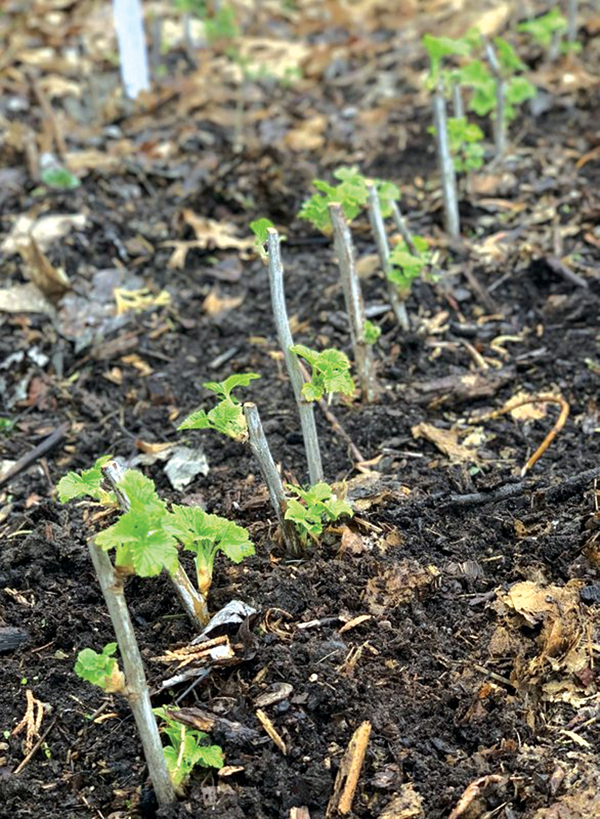Like magic: Multiply your trees, shrubs by using cuttings
Published 9:23 am Friday, November 6, 2020

- Photo by Lee Reich, AP Leaves appear on cuttings stuck in the ground the previous fall while the new roots are developing below ground.
|
Getting your Trinity Audio player ready...
|
By Lee Reich
Associated Press
How magical: Stick a piece of wood in the ground and next year it becomes a plant.
That stick is a hardwood cutting, an easy way to multiply some favorite trees, vines and shrubs. They’re called “hardwood” because the pieces are mature and woody rather than young and succulent.
Not every woody plant will magically take root and start to grow from hardwood cuttings. Expect close to a 100% “take” with plants such as grape, currant, gooseberry, privet, spiraea, and honeysuckle. But don’t even bother trying this method to make new apple, maple or oak trees.
Because they lack leaves, hardwood cuttings are less perishable than “softwood cuttings,” whose leaves can dry rooting stems out before roots form.
If you want to make your thumbs feel greener, try hardwood cuttings of willow, a plant I’ve seen take root from branches inadvertently left on top of the ground through the winter. Most other plants demand a little more finesse.
TAKE THE CUTTINGS
If you’d like to multiply a favorite plant by hardwood cuttings, now is a good time of year to start. Step back and look at the plant, and select some shoots that grew this past season — the youngest shoots. Those most likely to root have moderate vigor; they’re not too fat or too thin for the particular species.
Cut the shoots into manageable lengths of a half-foot or so, the uppercuts just above a swollen node where a leaf was attached, and the lower cuts just below a swollen node. Make sure you remember which end was up (furthest from the root). Professionals do this by cutting the bottoms off squarely and the tops at an angle so the ends are not mixed up during planting.
All that’s needed, then, is to slide the bottom of each cutting into some well-drained soil, deeply enough so that only the top node still shows. If you plant cuttings in autumn, mulch them to keep the soil warmer and prevent freezing and thawing of the ground from heaving them up out of the soil during winter. If you plant the cuttings in a nursery bed, the rooted plants should be ready to move to their permanent homes by next fall.
OPTONS IN PLANTING AND STORING CUTTINGS
You could, instead, stick the cuttings in the ground in spring. I prefer fall planting because the cuttings have a chance to make some roots before the tops start growing in spring. New shoots can’t grow until after they’ve experienced winter cold.
Spring planted cuttings are often so overanxious to begin growth that new top growth is underway before root growth begins. The shoots soon realize there are no roots to sustain them, then flop over and die.
If you would rather plant in the spring, the cuttings need to be kept cool and moist through the winter. The traditional storage method is to bundle the cuttings together and bury them upside down in the soil. This lets the bottoms of the cuttings be first to feel the warming effects of spring sun beating on the ground, while the shoot buds are held in check, buried deeper in cold ground.
A refrigerator also works: Seal the cuttings in a plastic bag, wrap the bag in a wet paper towel, and then seal the whole thing in yet another plastic bag. Either way, plant the cuttings as early as possible in spring, as soon as winter’s excess moisture has drained from the ground.
(Lee Reich writes regularly about gardening for The Associated Press. He has authored a number of books, including “Weedless Gardening” and “The Ever Curious Gardener.” )





